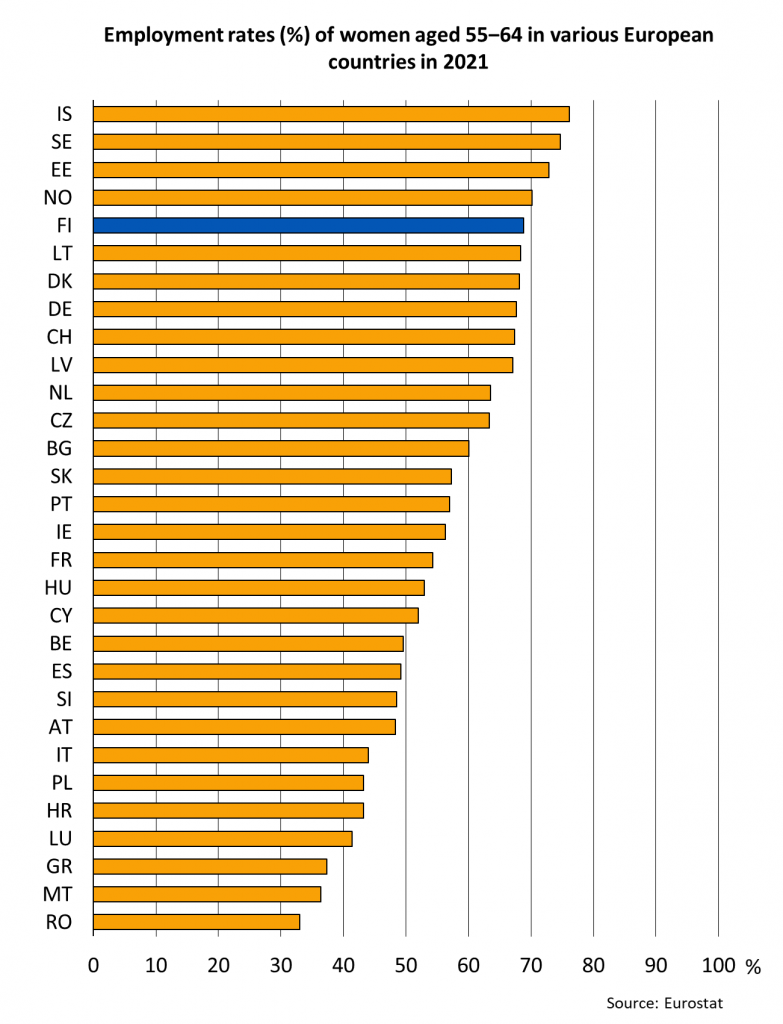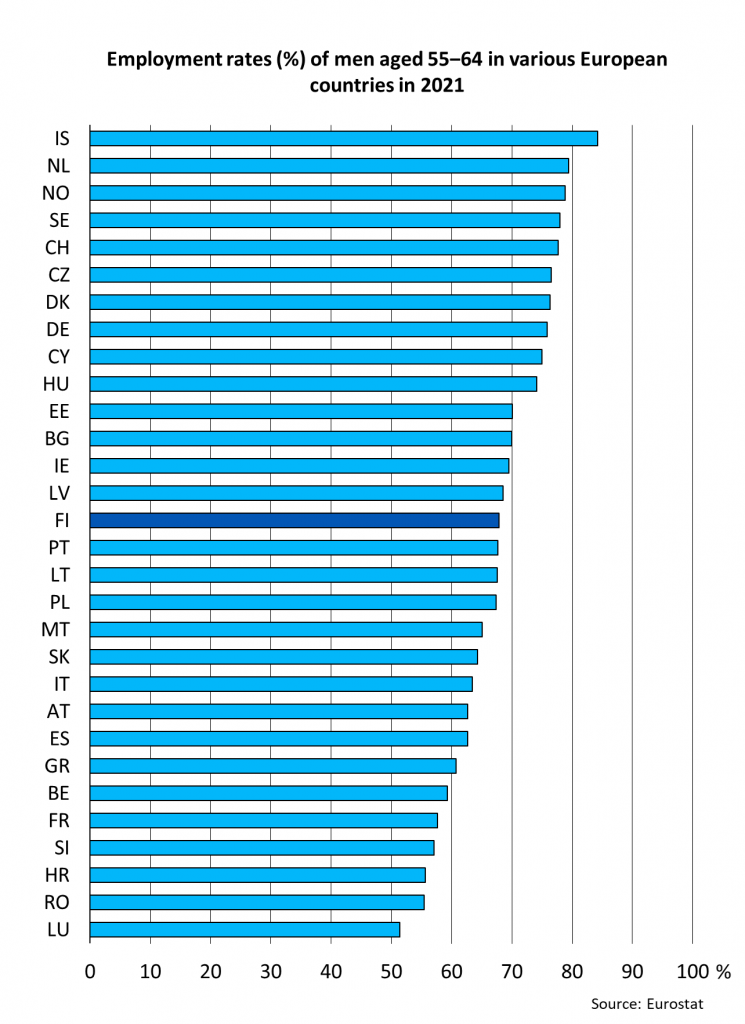Effective Retirement Age and employment rates
In Finland, retirement is measured annually by the expected effective retirement age. There is no comprehensive international benchmark data that is fully comparable to the Finnish calculated retirement expectancy.
In international comparisons, the average exit age from the labour force is often used to measure the effective retirement age. However, the effective retirement age and the average exit age from the labour force are not the same thing, even though they are sometimes considered equal in international comparisons. For example, people may exit the labour force without retiring or retire and still continue working.
OECD is measuring labour market exit age whereas Eurostat is currently measuring the length of working careers i.e. the Duration of Working Life.
Read more
More on other sites
Employment rates of 55–64-year-olds in Europe
The employment rate describes the percentage of employed individuals within a country’s population. In the graphs below, the employment rates of 55–64-year-old women and men have been presented separately relative to the total population of that age in different European countries, as well as the average of the EU27 countries. The source of the graphs is Eurostat’s statistical database, which includes employment rates collected from labour force surveys in different countries.


The employment rate of Finnish women aged 55–64 is higher than in many other European countries. In 2021, the employment rate of Finnish women (68.8%) was significantly higher than the average of EU27 countries (54.3%), as was the case in the other Nordic countries. Additionally, the employment rate of women in this age group in Finland is higher than that of men, which is quite rare across Europe.
The employment rate of Finnish men aged 55–64 (67.9%) was also higher than the EU27 average (67.0%) in 2021. Employment rates for men were above the EU27 average in all Nordic countries.
More on other sites